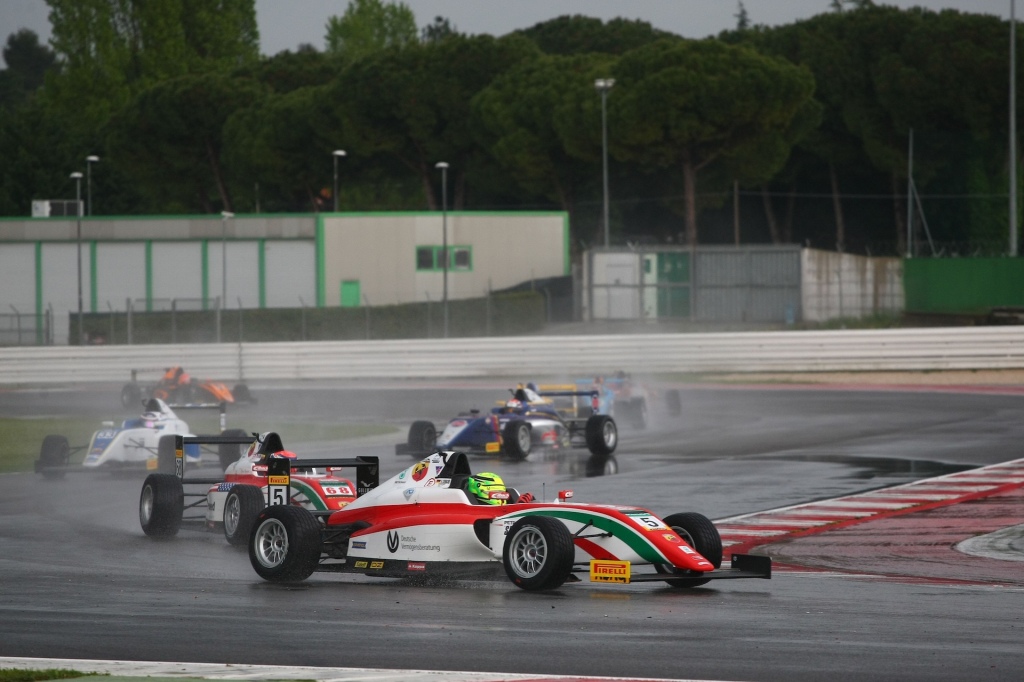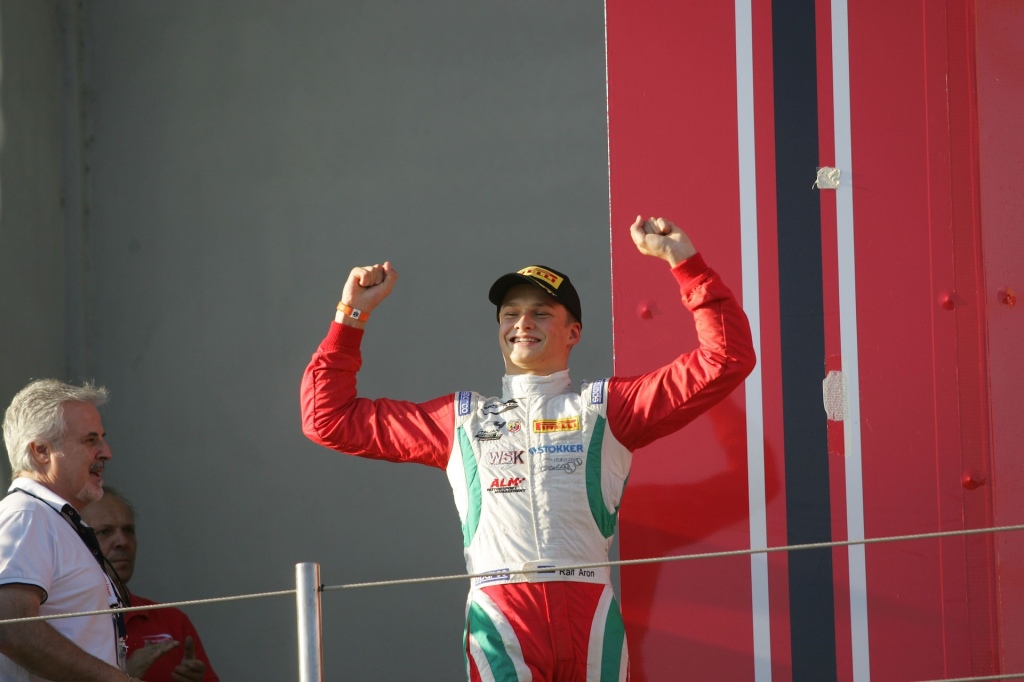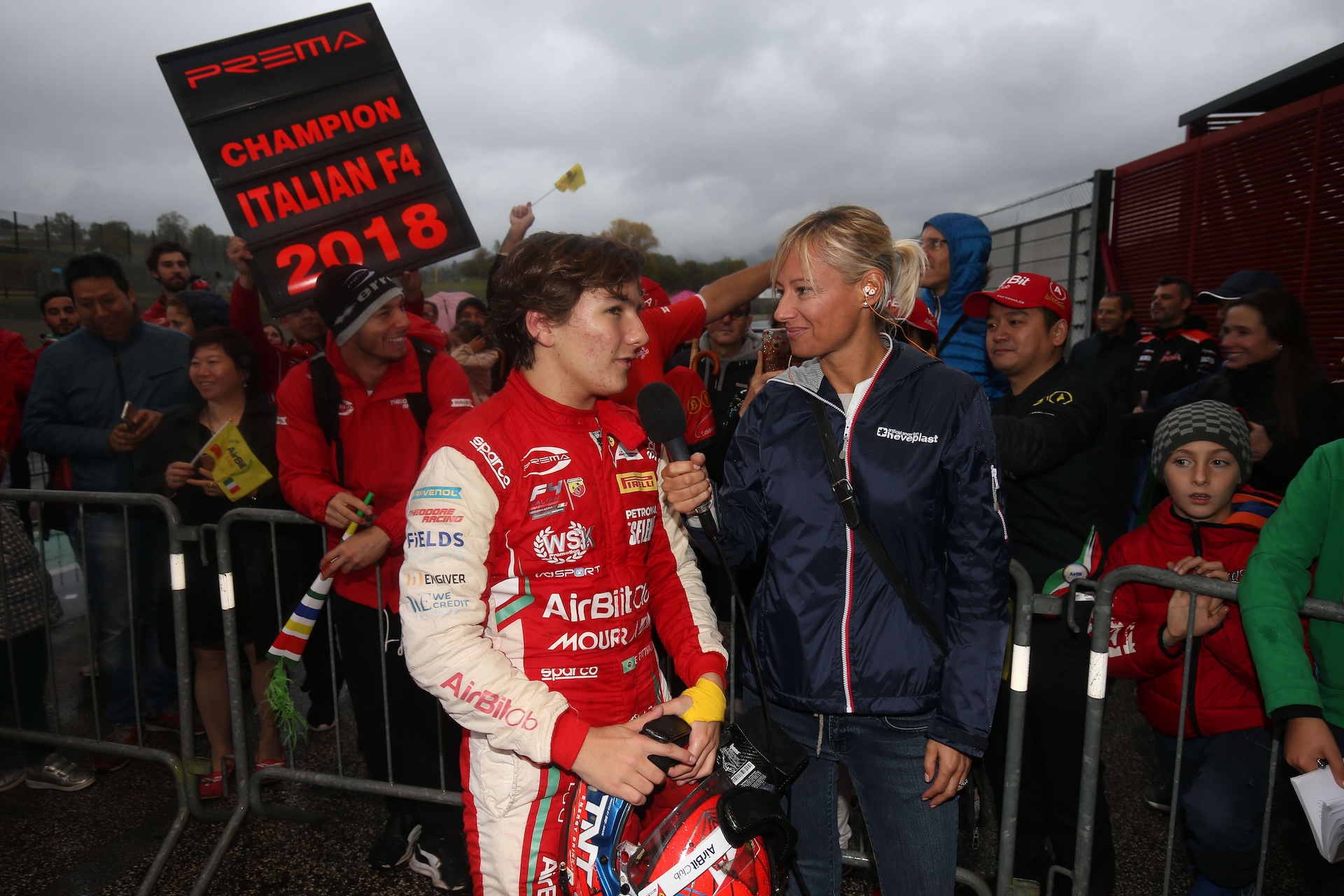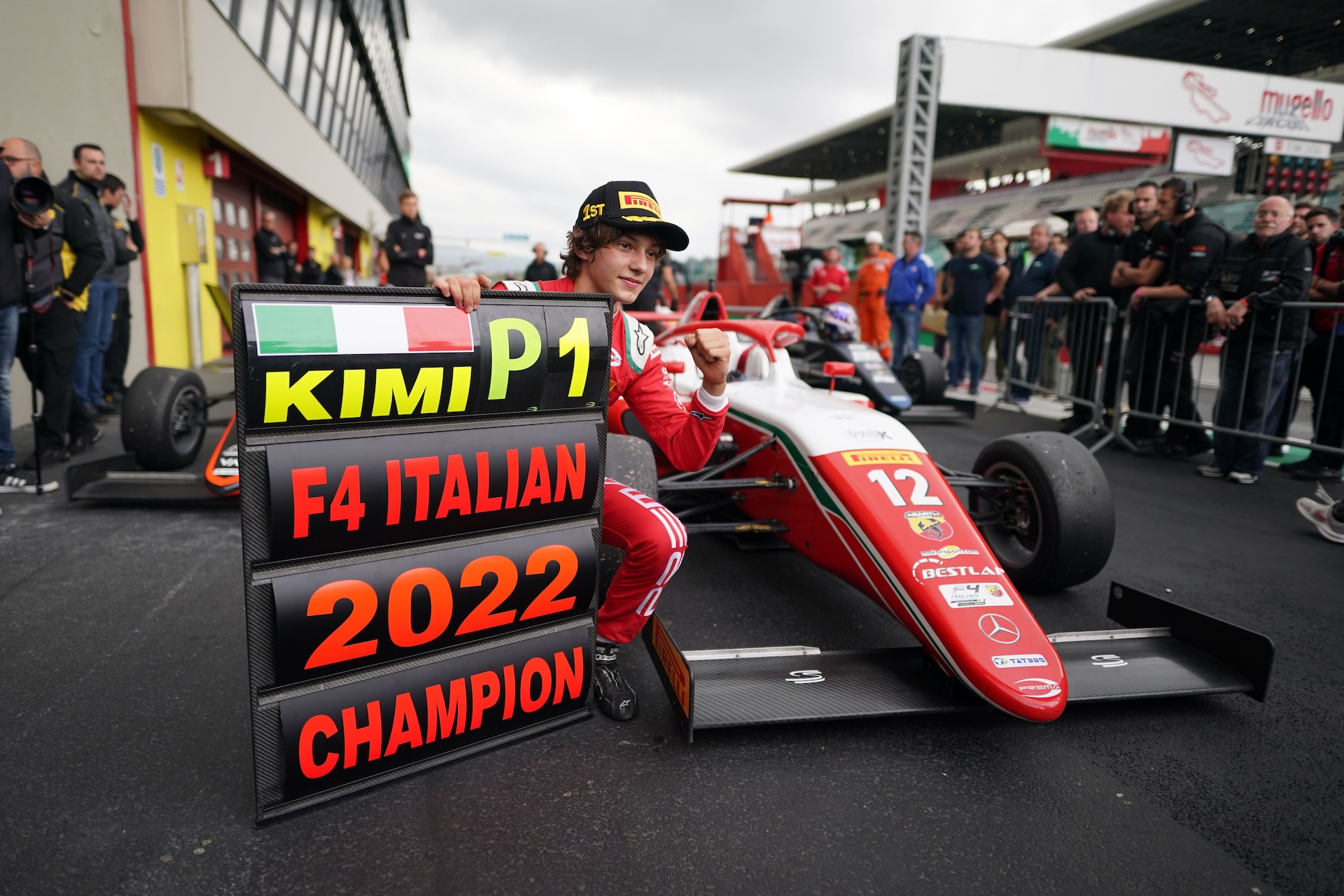On 8 June 2014, Adria International Raceway hosted the first-ever Italian Formula 4 race. A young Lance Stroll won it in his Prema, taking the first of seven victories that would help him clinch the title at the end of the season. Ten years later, Italian F4 has cemented its place at the zenith of the worldwide F4 landscape. Feeder Series retraces the key moments that got it there – and the parallel story that decade tells about the development of the F4 category.
By Daniele Spadi
In 2014, as Formula 1 entered a new era in its technical regulations, the prospects for Italian motorsport at the top level were bleak.
No Italian driver had entered a Formula 1 race for two years. The closest was Davide Valsecchi, who had won GP2 in 2012, but a reserve driver role with Lotus the following year never materialised into the race seat he had expected. The country’s national Formula 3 series, Italian F3, had shut down at the end of 2012, as had Italian Formula Renault 2.0. Entry-level series Formula Abarth still existed, but by the end of 2013, it became clear that its days were numbered.
A long-term panacea, or so it seemed, was the launch of the F4 category by the FIA Single-Seater Commission, led by Gerhard Berger. Its first iteration would be Italian F4, run by the national motorsport federation, ACI Sport. The new championship aimed to fill a gap between karting and Formula 3, creating a series with lower costs and more accessibility.

The car of choice was the Tatuus F4-T014, the first vehicle homologated according to the FIA Formula 4 rules. Tatuus had built cars for other lower-level junior series, including Formula Abarth, but this chassis became one of its most popular.
The first season of Italian F4 was a huge success, with 28 drivers racing in the championship across the main championship and the Italian F4 Trophy for drivers over 18. While many of those names have since faded into obscurity, champion Stroll became the first F4 graduate to ascend to Formula 1 in 2017.
Growth in the early years
Even as the F4 concept spread around the world, entry numbers boomed over the next few seasons, with a total of 36 drivers taking part in at least one event in 2015 and 48 doing so in 2016. Italian F4 had quickly established itself as a prime place for drivers to start their careers in the feeder series world.
In 2015, Ralf Aron – the brother of current F2 championship leader Paul – took home the title ahead of current Sauber F1 driver Zhou Guanyu and Ferrari reserve Robert Shwartzman. Further down the standings, notable names include former F2 drivers David Beckmann in fourth and Marino Sato in 10th; Lando Norris, F1’s most recent new winner, in 11th after a partial campaign; and factory Ferrari driver Yifei Ye, Shwartzman’s World Endurance Championship teammate.
This was also the first season of the women’s trophy. Twin sisters Julia and Wiktoria Pankiewicz competed against each other throughout the season, with the former ultimately taking home the title.
The 2016 season set a new record for entries. Forty-one drivers were present at the opening round, forcing the series to adopt a new format featuring qualifying races. Reigning European Le Mans Series LMP3 champion and current GT3 racer Marcos Siebert won that year by just 15 points over eventual Haas F1 driver Mick Schumacher, the smallest margin of victory in the history of the series.

That season was the first time that Prema failed to win both the drivers’ and the teams’ titles, as Siebert’s success came with Jenzer Motorsport. New names to the series in 2016 included onetime Red Bull reserve Jüri Vips in fifth, his Prema teammate Juan Manuel Correa in sixth, Alpine junior Kush Maini in 16th and Richard Verschoor in 22nd after a one-race appearance.
The 2017 season had 38 drivers enter at least one race but only 17 included in the final standings as a new rule meant that drivers had to enter five of the seven rounds, including the season finale, to be classified. Current Chip Ganassi Racing IndyCar driver Marcus Armstrong brought Prema back to the top of the drivers’ standings as the likes of Vips and 2022 F2 champion Felipe Drugovich, now an Aston Martin reserve driver, also stood on the top step of the podium in partial campaigns.
International expansion
After four years, it was time for the series to take the next step. The 2018 season was the first in series history to feature an international round. Ahead of its return as French Grand Prix host in June, the Circuit Paul Ricard hosted the season’s second round, with eventual F2 driver Olli Caldwell leading future roommate Frederik Vesti home in race one and the 2023 F2 runner-up taking the other two on Sunday. The championship was won by then–Ferrari junior Enzo Fittipaldi, who raced with Red Bull backing in F2 last year.

By the following year, the number of foreign races rose to two, with the Hungaroring and the Red Bull Ring hosting rounds three and four of the season. Then–Red Bull junior and current F2 driver Dennis Hauger staged a historic title run, securing Van Amersfoort Racing’s first title in the series, taking the most points in a single season with 369 and winning with the biggest margin of 136 points. Those two records still stand.
2019 was also the first year that Prema did not win a single title, Hauger’s dominance proving to be decisive in the teams’ standings too. The Italian team did have Gianluca Petecof beat Paul Aron in the race to second place by seven points, with other notable alumni including F2 race winner Roman Staněk in fifth, recent F2 podium finisher Joshua Dürksen in eighth and former Red Bull junior Jonny Edgar in 10th.
Racing through the pandemic
Nine and a half months had elapsed between Hauger’s 12th win of 2019 and Gabriele Minì’s win on debut in 2020. The coronavirus pandemic had spread throughout Italy in the opening months of 2020, killing tens of thousands and delaying the start of the season. Even a compressed campaign with seven rounds unfolding from August to December could not stop Prema from going straight back to the top and winning both the drivers’ and the teams’ titles.
Current F3 championship leader Minì took the crown with four wins and eight more podiums, outscoring 2023 24 Hours of Daytona class winner Francesco Pizzi and current teammate Dino Beganovic in the process. Twelve drivers from that season are currently competing in either F2 or F3, among them Gabriel Bortoleto in fifth, Jak Crawford in sixth and Leonardo Fornaroli in ninth.

One spot behind Fornaroli in 10th was Ollie Bearman, who ran a partial campaign with US Racing. But the now–Ferrari junior shone the following season with Van Amersfoort, taking a record seven consecutive race wins on his way to the title. Despite missing two entire rounds, current Red Bull junior Tim Tramnitz finished as runner-up ahead of Kirill Smal, with Sebastián Montoya and Fornaroli rounding out the top five. As Hauger did in 2019, Bearman led VAR to the teams’ title with his dominant display as Prema had their worst year yet and took only one victory.
At this point, 12 F4 series were still running, with several more in development, but the Italian championship had established itself as the preeminent one on the feeder series ladder as the Tatuus F4-T014 had its swan song.
New car, same competitiveness
The ninth edition of the series in 2022 saw the introduction of a new car, the Tatuus F4-T421. The newer model had safety enhancements including the halo, a new monocoque structure, a new steering wheel, a lighter gearbox and an improved braking system.
The new machinery could have shaken up the grid, but Prema once again rose to the occasion as the fastest team. Taking all but four race wins throughout the 2022 season, the Italian outfit scored a record-breaking 800 points, 289 more than their nearest competitor. Andrea Kimi Antonelli took home a record of 14 poles, 13 race wins and 14 fastest laps in 20 races on his way to the title, becoming the second driver after Bearman to win both Italian F4 and ADAC F4. Current McLaren junior Alex Dunne was second, bringing US Racing to a best-ever second in the teams’ standings.

Prema remained the team to beat in 2023, but their Kerpen-based rivals came back even stronger, with F4 race winner Kacper Sztuka as their frontman for the title race. He won the first race in Imola before a series of retirements and subpar performances left him more than 100 points behind Prema rookie Arvid Lindblad.
The Red Bull junior amazed with six wins from the first 12 races, including a triple win in Monza, but Sztuka wrangled the spotlight from him in the final three rounds. In one of the greatest comebacks in recent junior single-seater history, Sztuka took eight wins in the last nine races, overcoming the 113.5-point deficit to his rival and taking his second title of the year after his Formula Winter Series triumph. Lindblad eventually dropped to third behind McLaren junior Ugo Ugochukwu.
What now?
As the second-generation Tatuus chassis spreads worldwide, other F4 championships have risn in level. Spanish F4 grid sizes have ballooned in the same way Italian F4’s did many years ago, while centrally run French F4 and British F4 have become bona fide alternatives in Europe for drivers with smaller budgets. F4 UAE and the Formula Winter Series have attracted increasingly more competitive grids with their adoption of the Tatuus F4-T421.
But despite the higher costs of Italian F4, its allure is undeniable. The presence of teams such as Prema, Van Amersfoort Racing and PHM Racing means drivers can stay in the same environment from their first single-seater championship up to Formula 2, as Taylor Barnard has most recently shown. Moreover, the calendar features three F1 venues in Monza, Imola and Barcelona, with Spa and the Red Bull Ring also on the calendar in the previous two years.
Even the ACI–run Euro 4 Championship, created last year, acts as a complement to the series, meaning teams and drivers get extra track time under the ACI umbrella instead of having to go to a rival series as they once did with ADAC F4.
The 11th season started in Misano a month ago. Title favourite Freddie Slater won all three races for Prema ahead of Mercedes junior Alex Powell, though a tougher second round last weekend at Imola saw Van Amersfoort’s Hiyu Yamakoshi and US Racing’s Akshay Bohra gain ground. Of the five rounds that remain, four will run in support of the Formula Regional European Championship, the foremost series on the next rung of the FIA ladder.

Italy’s position in global motorsport is stabilising. The country may only have had one driver on the F1 grid since 2014 in Antonio Giovinazzi, but Mercedes junior Antonelli is at the forefront of a new generation of young drivers, all graduates of its F4 scene, with serious F1 prospects. There are two F1 races in Italy, the only country besides the United States with more than one, and Monza, which recently celebrated its centennial, has been recently renovated with the aim of securing its long-term future. Even Prema recently celebrated its 40th anniversary, and the outfit will expand stateside with an IndyCar team next year.
Of the six drivers on the current F1 grid with F4 experience, half came through Italian F4. That proportion seems all but certain to increase as the Italian junior racing scene kickstarts more and more drivers’ journeys to the highest echelons of motorsport.
Click below to see a gallery of the series’ first 10 champions. (All photos courtesy of ACI Sport)










Header photo credit: ACI Sport
Make a one-time donation
Make a monthly donation
Make a yearly donation
Choose an amount
Or enter a custom amount
Your contribution is appreciated.
Your contribution is appreciated.
Your contribution is appreciated.
DonateDonate monthlyDonate yearlyDiscover more from Feeder Series
Subscribe to get the latest posts to your email.

